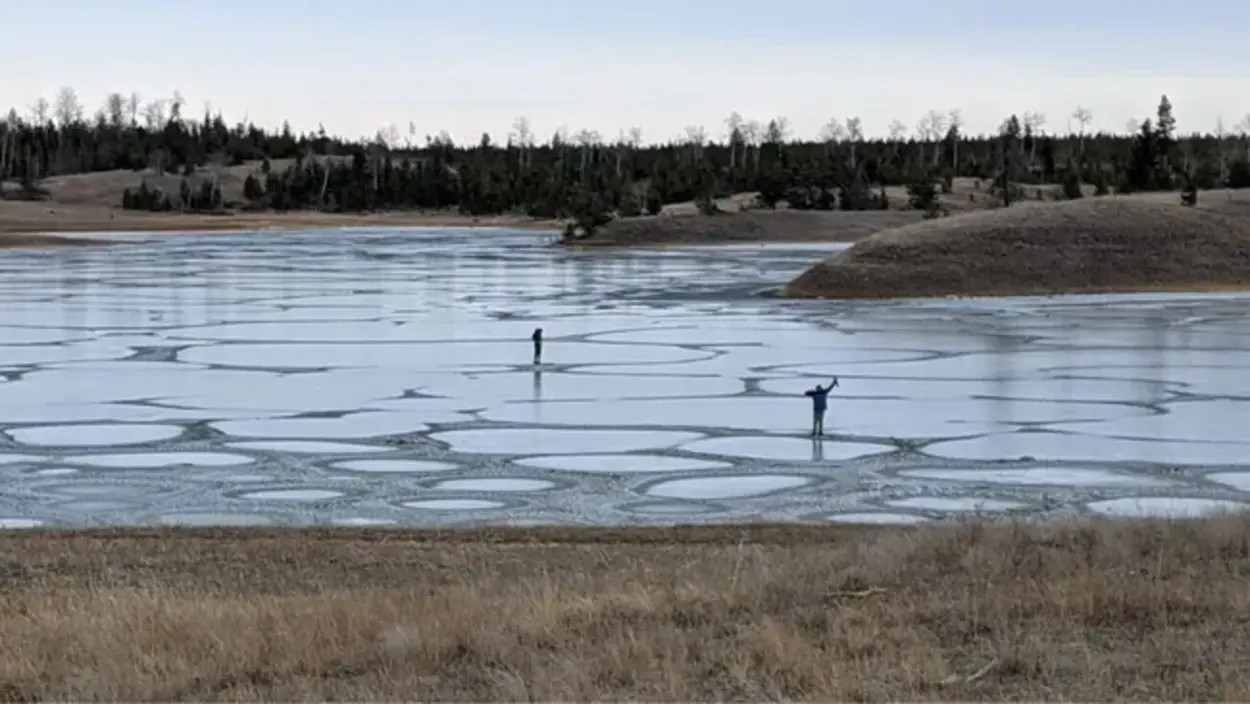A shallow lake may tell how life began on Earth
- January 25, 2024
- 0
Scientists have discovered a lake that may be a good match for Darwin’s “warm little lakes” where life emerged on early Earth. A team of scientists from the
Scientists have discovered a lake that may be a good match for Darwin’s “warm little lakes” where life emerged on early Earth. A team of scientists from the

Scientists have discovered a lake that may be a good match for Darwin’s “warm little lakes” where life emerged on early Earth. A team of scientists from the University of Washington has made a discovery by finding a shallow “soda lake” in Western Canada that has the chemical composition and conditions necessary for a small body of water, facilitating the spontaneous synthesis of complex molecules. It gave rise to life on Earth approximately 4 billion years ago.
Soda lakes, as focused on in this study, are small bodies of water that contain high levels of dissolved carbonate and sodium; This is like putting a large amount of baking soda in them. However, in this case, the high levels of dissolved sodium and carbonate are due to the reaction between water and volcanic rocks. The findings could help solve the age-old problem of explaining how life arose on Earth and could also be applied to other planets in the solar system, such as Mars and Venus.
Since the 1950s, researchers have succeeded in obtaining biological molecules such as amino acids and the building blocks of RNA from inorganic molecules, but there has been a long-standing problem with the next step in the process. RNA and DNA, the key molecules of life, and the membranes of living cells require a base of naturally occurring molecules of the element phosphorus known as phosphate.
The concentrations of phosphate required to create biomolecules in the laboratory are 1 million times higher than levels normally found in rivers, lakes or oceans. This has become known as the “phosphate problem” in theories of the origin of life on Earth, and this new study suggests soda lakes could be the solution.
“I think these soda lakes provide an answer to the phosphate problem,” David Ketling, senior author of the study and professor of earth and space sciences at the University of Washington, said in a statement. “Our answer is promising: Such an environment should have appeared on early Earth, and possibly on other planets, because it is a natural consequence of how planetary surfaces form and how water chemistry works.”
Soda lakes contain large amounts of phosphate as well as high levels of dissolved carbonate and sodium. A 2019 study found that the concentration of these molecules in these small bodies of water can be up to 1 million times higher than in typical bodies of water. This means soda lakes could be ideal places for the key molecules of life to emerge.
To test this, the University of Washington began investigating just such a soda lake by stopping at Last Chance Lake, a 12-inch-deep muddy lake located at the end of a dirt road on British Columbia’s Cariboo Plateau. , Canada. This soda lake had the highest known phosphate level in the 1990s.
There is not only volcanic basalt rock at the bottom of Last Chance Lake, but also a dry, windy climate that keeps water levels low and allows dissolved compounds to condense as incoming water evaporates rapidly. The scientists behind this new study visited the lake three times between 2021 and 2022, when it was frozen in both summer and winter.
“You have a seemingly dry salt marsh area, but there are also nooks and crannies. Between the salt and the sediment there are small pockets of water containing high amounts of dissolved phosphate, said team member and University of Washington doctoral student Sebastian Haas.” “We wanted to understand why and when this might happen.”
After examining samples of water, lake sediment, and salt crust found in Last Chance Lake to understand the lake’s chemistry, the team found that calcium combines with large amounts of carbonate and magnesium to form dolomite.
This is different from the situation in other lakes, where phosphate often binds with calcium to form calcium phosphate, which forms the enamel of our teeth and insoluble, depleting phosphate levels.
Due to calcium retention in the dolomite in Last Chance Lake, many residual free phosphates remain; If these conditions had existed in reservoirs approximately 4 billion years ago, they would have allowed the essential components of the origin of life’s chemistry to exist in the requisitely high concentrations.
Not only did the team find that Last Chance Lake suggests that soda lakes are strong candidates for where life on Earth might originate, but they also expect conditions in these lakes to be common to other bodies in the Solar System and all planets. Beyond the solar system, extrasolar planets or exoplanets.
“We worked on a natural environment that should be common to the entire solar system,” Haas said. “Volcanic rocks dominate planetary surfaces, so the same water chemistry may have been present not only on early Earth but also on early Mars and early Venus, if liquid water existed.”
“These new findings will help inform origins of life researchers who replicate these reactions in the laboratory or search for potentially habitable environments on other planets,” Catling concluded.
Source: Port Altele
As an experienced journalist and author, Mary has been reporting on the latest news and trends for over 5 years. With a passion for uncovering the stories behind the headlines, Mary has earned a reputation as a trusted voice in the world of journalism. Her writing style is insightful, engaging and thought-provoking, as she takes a deep dive into the most pressing issues of our time.